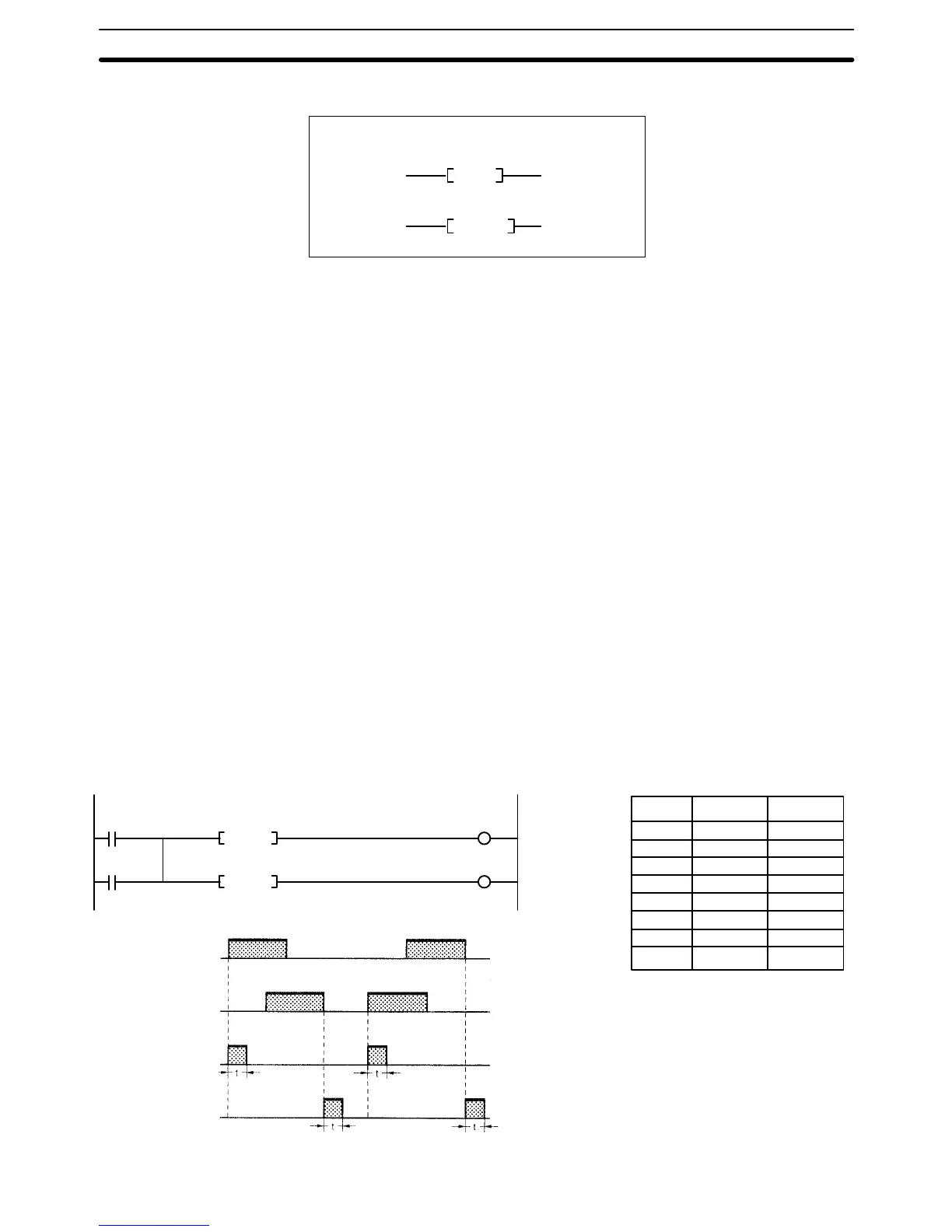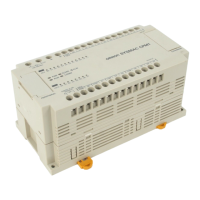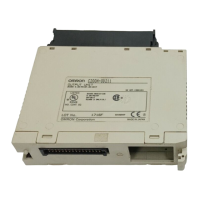123
5-6-2 CONDITION ON/OFF: UP(018) and DOWN(019)
DOWN
Ladder Symbols
(018)
UP
(019)
Description UP(018) turns ON the execution condition for one cycle at the rising edge (OFF
to ON) of the execution condition and then turns OFF the execution condition
until the next time a rising edge is detected.
DOWN(019) turns ON the execution condition for one cycle at the falling edge
(ON to OFF) of the execution condition and then turns OFF the execution condi-
tion until the next time a falling edge is detected.
Another instruction must follow UP(018) or DOWN(019), i.e., they cannot be
used as right-hand instructions.
Precautions Be careful when using UP(018) and DOWN(019) in subroutines between IL and
ILC, and between JMP and JME instructions, because the execution condition
may remain ON for more than one scan. Refer to
5-8 INTERLOCK and INTER-
LOCK CLEAR: IL(002) and ILC(003), 5-9 JUMP and JUMP END: JMP(004) and
JME(005)
, and
5-30 Subroutines
and
5-31 Interrupt Control
for details.
UP(018) and DOWN(019) can only be used with CVM1 version 2 or later CPUs.
They cannot be used with version 1 or earlier CPUs; use DIFU(013) and
DIFD(014). Refer to
5-7-2 DIFFERENTIATE UP/DOWN: DIFU(013) and
DIFD(014)
.
The DIFU(013) and DIFD(014) instructions can also be used for the same pur-
pose, but they require work bits. UP(018) and DOWN(019) simplify program-
ming by reducing the number of work bits and program addresses needed.
Flags There are no flags affected by UP(018) or DOWN(019).
Example The timing chart illustrates the operation of UP(018) and DOWN(019) in the fol-
lowing example.
(018)
UP
0000
01
0000
02
0001
01
0001
02
(019)
DOWN
00001 LD 000001
00002 OR 000002
00003 OUT TR0
00004 UP(018)
00005 OUT 00101
00006 LD TR0
00007 DOWN(019)
00008 OUT 000102
Address Instruction Operands
Input CIO 000001
Input CIO 000002
Output CIO 000101
Output CIO 000102
t: Cycle time
TR0
(CVM1 V2)
Ladder Diagram Instructions Section 5-6

